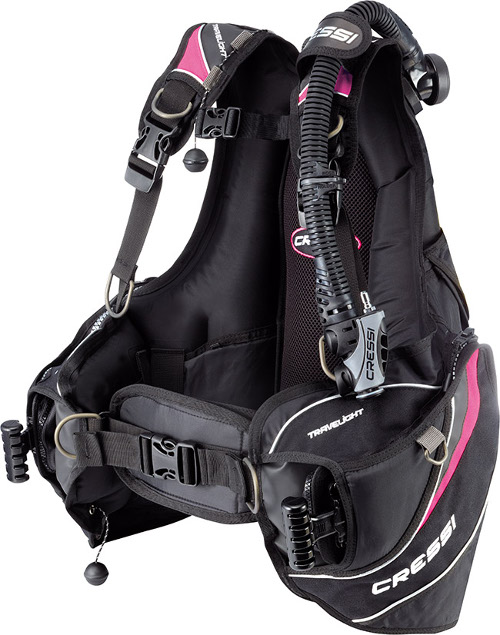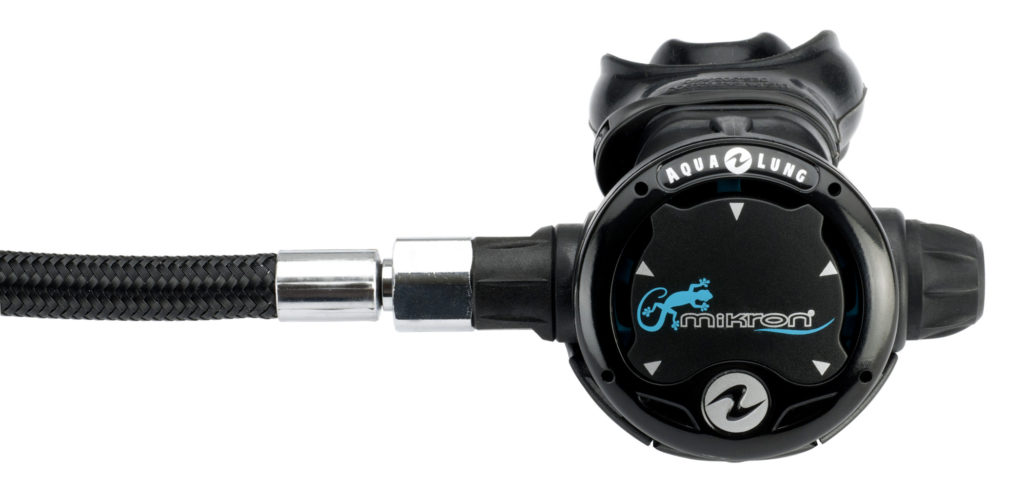One of the most alluring things about our sport is the possibility of travel to exotic locations. But as a traveling scuba diver, you’ll be well aware of how bulky and heavy the gear can be when you’re lugging it around an airport. And with luggage weight limits constantly shrinking, we divers must be quite creative if we want to bring our own gear while traveling. If you’re both an avid diver and an avid traveler, it may be time to invest in lighter gear. Below we’ve offered our picks of the best dive gear for travel.
BCD

BCDs are one of the heavier, bulkier items we usually bring with us. Fortunately, there are lots of compact, lightweight travel BCDs available. These types of BCDs usually offer fewer pockets, D-rings and padding because these are what add weight and bulk to the jacket. It’s best to comparison shop a bit to make sure you get one that works for you and one that has at least a few of the features you want. Most travel BCDs weigh just under or around 5 pounds, and one of the lightest, simplest ones you’ll find is the Aqua Lung Zuma. Cressi also offers a number of great travel BCDs. If you prefer the wing-and-backplate setup, you’re already halfway there — the only heavy item in this configuration is the backplate. Make sure to replace your steel plate with one made of aluminum, or even better, invest in a travel-specific one, such as the Aqua Lung Ultralight Backplate, which is soft and weighs just over a pound. Alternately, you could pick up a wing-and-backplate complete BCD for travel, such as the Halcyon Traveler BC.
Integrated octopus
One great way to save weight is to bring gear that performs several tasks. A combined low-pressure inflator and octopus is one such jack-of-all-trades. Essentially a low-pressure inflator with a built-in mouthpiece, it doubles as your backup regulator. In case of a buddy’s out-of-gas emergency, you would donate your own primary and switch to the backup yourself, which is essentially the same method used by cave divers. This system is only slightly bigger and heavier than a normal low-pressure inflator, but saves you bringing an entire octopus.
Travel regulator

There are quite a few travel regs out there, such as the Aqua Lung Mikron, that will save you a few pounds compared to the heaviest traditional ones. And if you choose an integrated octopus as mentioned above, you’ll really save a lot of weight by combining it with a low-weight primary. Do note that most of these combinations don’t do well in cold water, though, which makes them ideal primarily for tropical divers. If you’re traveling to Silfra or Scotland, your gear will be under greater demands. Although you may need to go with a non-travel reg if you’re primarily a cold-water diver, eliminating the octopus will still shave off some weight. Another option is to get a non-travel reg, but made from a lightweight material like carbon. One such reg is the Mares Carbon 52X, although this is a somewhat pricier option.
Fins
Even though most fins are already pretty lightweight, there’s still weight to be saved here. Shop around for a good, strong fin that isn’t excessively heavy, and you’ll do fine. Things do get a bit trickier for divers who prefer traditional rubber fins, however, which can weigh up to seven pounds for the pair. Rubber fins are often shorter than plastic fins, so in terms of bulk they’re a solid choice, but weight is a problem. The Hollis F2, a purpose-made travel rubber fin, weighs only a bit more than half of the heaviest rubber fins at four pounds.
Exposure protection
If you’re diving in cold water, there isn’t much to do except bring a thick, heavy, bulky wetsuit or drysuit, though even here, there are options for lighter-weight versions. A trilaminate drysuit is lighter than a compressed neoprene suit, even with the additional inner clothes you’ll need, though it is likely to be bulkier. If you’re traveling to the tropics, though, you may find that you don’t need very much exposure protection. A rash guard and swimwear may be enough, or, if you want a full-body wetsuit without the weight, you could explore options like the Fourth Element Thermocline, which boasts the thickness and weight (per square inch) of a rash guard, but the warmth of a 3 mm wetsuit.
Luggage
Once you’ve spent all this time getting your kit optimized, you don’t want to jam it all into a heavy roller suitcase. A lightweight, durable duffle is a better choice in many cases. The lightest I’ve found is the Fourth Element Manta bag, weighing in at just a little over 2 pounds. With a bit of investment in the best dive gear for travel — including the bag — you can save yourself a lot of weight, bulk and hassle and, considering the cost of excess luggage charges, you may break even more quickly than you think.

